inter-generational dialog and Immersive video installation
about the post-WWII history
about the post-WWII history
LAST MARCH
How social collective memory about World War II projects to our present and future?
INTER-GENERATIONAL DIALOG AND IMMERSIVE VIDEO INSTALLATION
ABOUT THE POST-WWII HISTORY
ABOUT THE POST-WWII HISTORY
LAST MARCH
How social collective memory about World War II projects to our present and future?
Author of the project, artist, and documentary filmmaker Naum Medovoy dedicated himself to revising the conventional representation of the Second World War in art.
10-channel video installation created in collaboration with video artist Nikita Shokhov and sound artist Oleg Makarov will be open to the public at the art center Cube.Moscow on May 29 -July 4, 2021.
Curated by Antonio Geusa and Anna Evtiugina
Curated by Antonio Geusa and Anna Evtiugina
The Last March immersive video installation combines the tragedy of the war and "missing in action" soldiers with the joy of the victory, coupling them with artists' interpretation of this collective history's influence on our lives today. The project is a collaboration of artists of two different generations: Naum Medovoy (1937), who survived WWII, and Nikita Shokhov (1988) and Oleg Makarov (1984), who are two generations younger. Medovoy immigrated from the USSR to the US over 40 years ago, where he became known as a documentary filmmaker and artist. For many years he dedicated himself to revising the conventional representation of the Second World War in art. The upcoming exhibition continues his renowned Last March cycle that included a documentary film and a series of works on paper. Creating a large-scale video installation was our deliberate choice because video is a medium whose language has a strong appeal to young viewers.
1
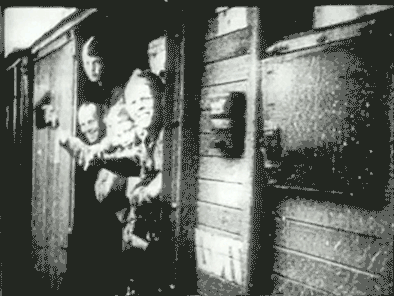

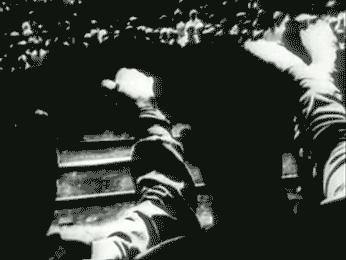



A picture without a story is never art. The difference between contemporary art and other forms of artistic creativity is in its presenting works that always keep a trace, either material or conceptual, of the artist who made them. Ignoring the personal, the maker, and where his/her unique vision of the world maturated from, reduces the work to a mere soulless object, a decoration of the everyday, which does not transcend the boundaries of the functional.
It is also true that the complexity of a work of art cannot be expressed in one single story only. However, biography is usually one of them, an essential starting point – never the finish line, of course.
It is also true that the complexity of a work of art cannot be expressed in one single story only. However, biography is usually one of them, an essential starting point – never the finish line, of course.

Yesterday is but today's memory and tomorrow is today's dream
Naum Medovoy was born in the Soviet Union. He came of age in the troubled years where people were busy rebuilding their lives on the ashes of a devastating war that had reshaped the consciousness of the whole humankind. To young Naum, the Cinema became his vision of the world in those years. In particular, he started to investigate the recorded image as an historical document and managed to master its visual and narrative power on viewers. However, as an artist as well as a man of ideals, he could not conform to the dictates of the State, which permitted Socialist Realism as the only possible canon in art. All forms of artistic expression which were not socialist in content and realist in form were banned and transgressors persecuted and often punished with imprisonment. It was the moral duty of each writer, artist, musician and director to offer the Soviet citizens books, paintings, music, and films that would speak of the happiness of building the greatest and most democratic country on the planet.
Documentary filming in Moscow, 1971

Naum Medovoy on the film production location, 1971
Nonconforming meant to live a reclusive, secret life in the podpol'e, the underground, away from direct contact with the wider public. However, whereas dissident literature survived in the form of samizdat, clandestine self-published texts, and finding the materials to make so-called "formalist" paintings and drawings was extremely complicated but not impossible, access to equipment and financial resources to make a film was absolutely unrealistic.
From the interview with Naum Medovoy, 2020 #1
Sverdlovskaya Film Studio got a request to produce a film about a noble policeman who searched for the missing soldiers. Working on this request Medodoy and Khlevner learned about issues which were not talked about in Soviet times.





2
The series of works on paper "The Last March" had a gestation of thirty-five years, from 1972, the year when its foundations, the 25-minute documentary film "The Missing (The Last March)", were laid, to 2007, when the series was started.
Filming in Moscow, 1971

Filming in Moscow, 1971
At the age of forty, in the heydays of the Cold War, Naum Medovoy, the filmmaker, emigrated to the other side of the Iron Curtain. Naum Medovy, the artist, found his new home in the United States.
From the interview with Naum Medovoy, 2020 #2
With support of Naum's friend Oleg Tselkov and recommendation from Brodsky the documentary film "The Missing" was shown at the American TV in 1982.
The series of works on paper "The Last March" had a gestation of thirty-five years, from 1972, the year when its foundations, the 25-minute documentary film "The Missing (The Last March)", were laid, to 2007, when the series was started. The first key to read the story of these works is right in this long span of time.
The filmmaker's home (the Soviet Union) and the artist's home (the USA) had gone through radical changes. The whole world had radically changed. In 2007, the Cold War that had made the two countries enemies had been finally left to history books. Most importantly, enough time had passed for Naum to unburden himself from the paralyzing heavy weight of memories that belonged to his own past and use the 1972 documentary film to tell a new story, a story that this time needed to be told in the contemporary art space, no longer in the cinema hall (or on the television screen). The historical material on film could finally become something more intimate and personal. The objective could now offer a platform for the subjective. The story of many people could become the story of one person.

On one of the saddest pages of modern human history, Naum vigorously applied pure paint.

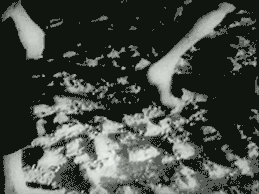
Tilda Publishing


The black and white film frames of the aftermath of a war that had left so many blank spaces in the life of millions of people had become the territory where it was possible to bring in inner (the artist's) and outer (the world's) nature.

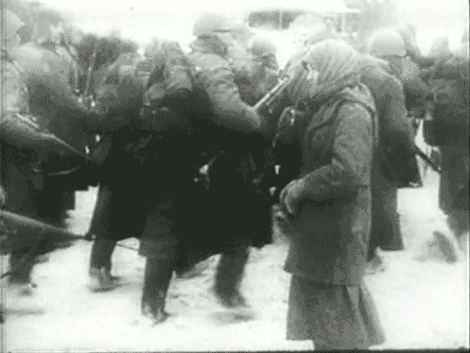
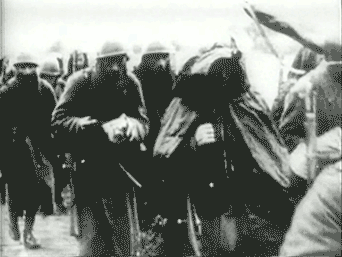


Flowers painted in an expressionist manner were often superimposed on the pictures of soldiers and grieving women.
3

At the beginning of the war, it was unthinkable that
out of ten who left for the war, only two will return,
five will die, and three will be missing
out of ten who left for the war, only two will return,
five will die, and three will be missing

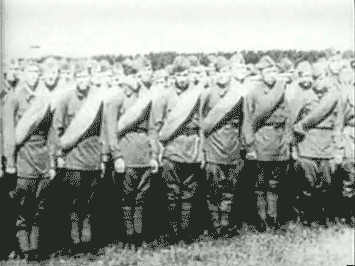
The 1972 visual diary from which they came from, "The Missing (The Last March)", boldly narrated the harshness of the lives of women stuck in the feeble hope that their loved ones were still alive. Their husbands had not come back from the front. Officially they were not dead, though. They were gone missing without a trace. The apparent paradox between the drama of the cinematic frame and beauty of the drawing is resolved in the personal history of the artist, a Soviet dissident, who had lived that drama on his own skin.
From the interview with Naum Medovoy, 2020 #3
The expressive painting on top of the portraits printed on paper became a form of sharing feelings of mothers and families of the missing soldiers.
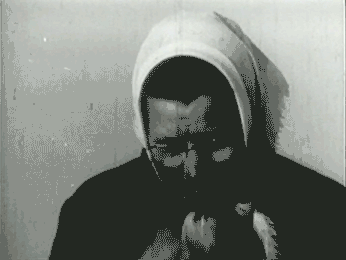
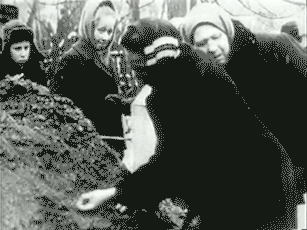
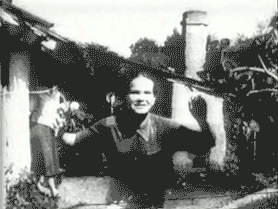

Thirty-five years had passed. Flowers could blossom again. Time had come to narrate new stories and Naum Medovoy lyrically did it keeping a very delicate balance between a past that must not be forgotten and the ephemerality (and beauty) of life itself. Despite the trauma, life goes on after all.
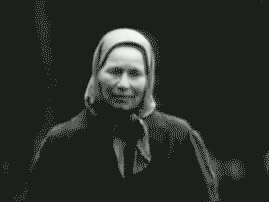



In 2017-2019, Naum Medovoy and Nikita Shokhov collected video portraits of our contemporaries in New York, Moscow, and Berlin.
From the interview with Naum Medovoy, 2020 #4
After two years of collaboration with video artist Nikita Shokhov and sound artist Oleg Makarov a new interpretation of the topic will be presented to viewers in the form of a 10-channel video installation in 2021.
Moscow, 2017

As a person who lived half pf his life in USSR and another half in the USA, Naum believes that it was the collaboration of these two countries who secured peace in the world.
This is worth recognizing today.
This is worth recognizing today.

Никита Шохов
Никита Шохов работает с XR, видео и фотографией, окончил Калифорнийский университет искусств, Университет Вирджинии, Школу Родченко. Работы Шохова выставлялись в Мультимедиа Арт Музее, Московском музее современного искусства, центре Watermill Center в Нью-Йорке, галерее GRAD в Лондоне, на пятой биеннале фотографии Photoquai в Париже, VI Московской биеннале современного искусства.
Олег Макаров
Олег Макаров исследует алгоритмы взаимодействия звука, движения и видео в интерактивных графических системах программирования. Постоянный участник фестивалей экспериментальной музыки и современного искусства International Rostrum of Electroacoustic Music (Италия), Avantart fest (Польша), Synthese (Франция), Musica Viva (Португалия), MUSICACOUSTICA (Китай), а также в России ART-ЗАВОД, ГОГОЛЬFEST, MIGZ, КИБЕРФЕСТ, Архстояние.
As curator of the project Antonio Geusa wrote, the young have learnt the biggest lesson from Naum Medovoy's work: Art becomes contemporary the moment it does not stop in front of the viewer's eye but it marches on, reaching the soul.
4
SKIRA Publishing and Salamatina Gallery released the book NAUM MEDOVOY: LAST MARCH
with the artist's works on paper and texts by John Kaumann.
with the artist's works on paper and texts by John Kaumann.


Naum Medovoy on the Grand Central Station, photo by Nikita Shokhov, New York, 2018
CREDITS
Naum Medovoy - author
Nikita Shokhov - video artist
Oleg Makarov - composer
Antonio Geusa - curator
Anna Evtiugina - curator, producer
Oksana Salamatina - gallerist, producer
Oksana Kotova - communications
Kate Selenkina - film scanning
Kate Romanova - immersive installation R&D
Filming group in Berlin:
Nikita Pavlov, Konstantin Ferdman
Filming groups in Moscow:
Anna Kortyukova, Artyom Go, Viktoriya Chernyavskaya, Kirill Proskuryakov, Theodore Guerlain, Denis Spiridonov, Vasiliy Sumin
Performers Moscow streets:
Taras Burnashev, Alexander Sutyagin, Yury Kordas,
Dmitry Volkov, Alexey Smyslov, Kristina Petrova,
Vera Shelkina
Filming groups in New York:
Alexey Kurbatov, Nikita Shokhov, Anna Evtiugina, Naum Medovoy
Performers New York streets: Brian O'Mahoney, Kate Eberstadt, Katy Pinke
Filming flowers:
Aleksey Kurbatov, Nikita Shokhov, Konstantin Lyubimov, Anna Evtiugina
Women's performances:
Natalia Obelchak - choreographer
Natalia Zhukova, Alina Guzhva, Julia Vvedenskaya, Asya Ashman, Sofia Zaika - performers
Maxim Mikheev - cinematographer
Anna Smirnova - costume designer
Alexandra Zinchenko - set designer
Vera Baratova - make-up artist
Kirill Vdovin - hair stylist
Partners:
RENTAPHOTO, Rodchenko Art School, Panasonic, Eidotech, Du-All Camera, Gosfilmofond, net-film.ru
Naum Medovoy - author
Nikita Shokhov - video artist
Oleg Makarov - composer
Antonio Geusa - curator
Anna Evtiugina - curator, producer
Oksana Salamatina - gallerist, producer
Oksana Kotova - communications
Kate Selenkina - film scanning
Kate Romanova - immersive installation R&D
Filming group in Berlin:
Nikita Pavlov, Konstantin Ferdman
Filming groups in Moscow:
Anna Kortyukova, Artyom Go, Viktoriya Chernyavskaya, Kirill Proskuryakov, Theodore Guerlain, Denis Spiridonov, Vasiliy Sumin
Performers Moscow streets:
Taras Burnashev, Alexander Sutyagin, Yury Kordas,
Dmitry Volkov, Alexey Smyslov, Kristina Petrova,
Vera Shelkina
Filming groups in New York:
Alexey Kurbatov, Nikita Shokhov, Anna Evtiugina, Naum Medovoy
Performers New York streets: Brian O'Mahoney, Kate Eberstadt, Katy Pinke
Filming flowers:
Aleksey Kurbatov, Nikita Shokhov, Konstantin Lyubimov, Anna Evtiugina
Women's performances:
Natalia Obelchak - choreographer
Natalia Zhukova, Alina Guzhva, Julia Vvedenskaya, Asya Ashman, Sofia Zaika - performers
Maxim Mikheev - cinematographer
Anna Smirnova - costume designer
Alexandra Zinchenko - set designer
Vera Baratova - make-up artist
Kirill Vdovin - hair stylist
Partners:
RENTAPHOTO, Rodchenko Art School, Panasonic, Eidotech, Du-All Camera, Gosfilmofond, net-film.ru








